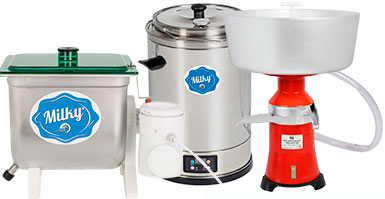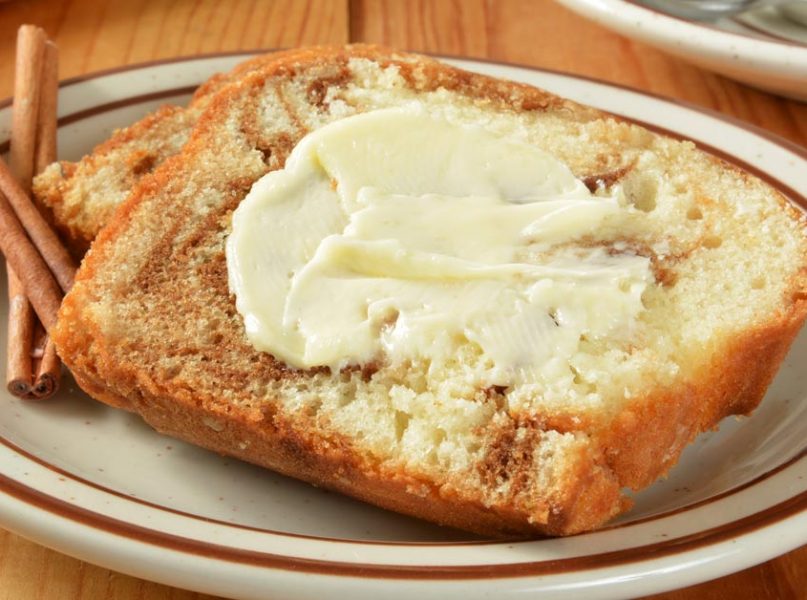We all love this creamy spread with the tender flavor. It goes great with a morning toast. We put it in different dishes to improve the taste. But eating butter every day we don’t think much of the origin of butter. And the most exciting thing is that this spread is almost as ancient as humanity.
First mentions about butter
The earliest evidence of butter dates back to 2000 years B.C. Archaeologists have found a limestone tablet that is around 4500 years old. It illustrates how our ancestors were making butter. However, some historians suppose that this spread was discovered way earlier. We just can’t spot that moment the civilization has shifted to the purposeful manufacturing making accidentally discovered butter an everyday product on our tables.
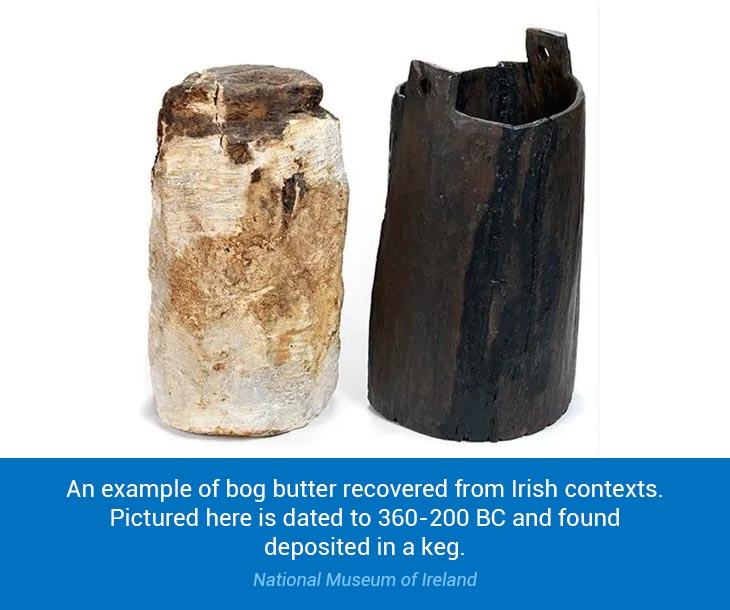
It’s not precisely known who invented butter. There is a theory of how humans created the first batch purely by accident. Quite likely, some nomad was transporting sheepskin bags with milk attached to his horse or another animal he was riding. And during the journey, milk was constantly getting churned in those bags thanks to the movement of the horse. So when the nomad reached the destination, he had a creamy and delicious surprise in his bags – butter.
This theory is backed up by the evidence of how was butter made in the olden days. People were making this spread using leather bags and horses. Also, they could simply vigorously shake the bag with their hands until the milk turns into butter. However, they used goat, sheep, and yak milk instead of cows. Plainly because those beasts were the ones domesticated by humans back then, and even though we don’t know when exactly butter was invented, we can suppose that we have this spread for around 10000 years.
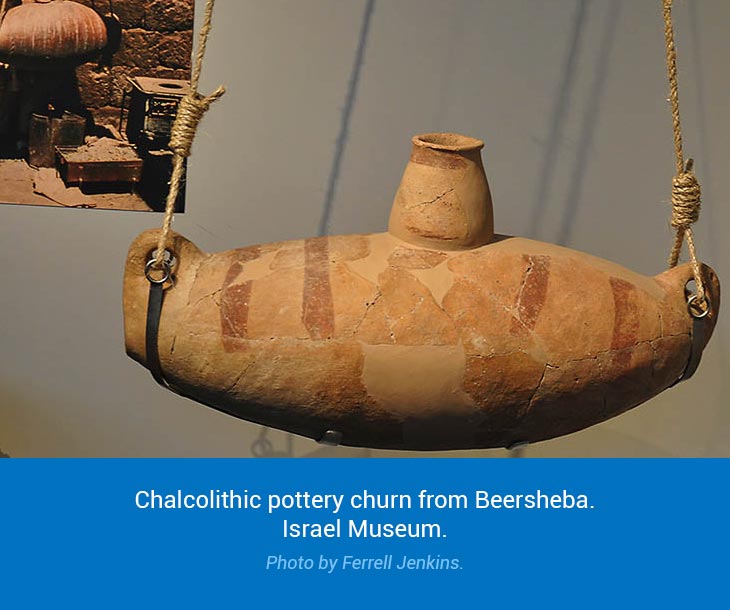
Because of the colder climate, butter was more popular in northern Europe. However, there are mentions of this spread in ancient Near Eastern texts – their butter was called ghee. It was sold in Arabia and Sudan. And in India, it was used as an offering to gods and considered to be a symbol of purity. So it is hard to tell where did butter originate from exactly. It seemed to be everywhere.
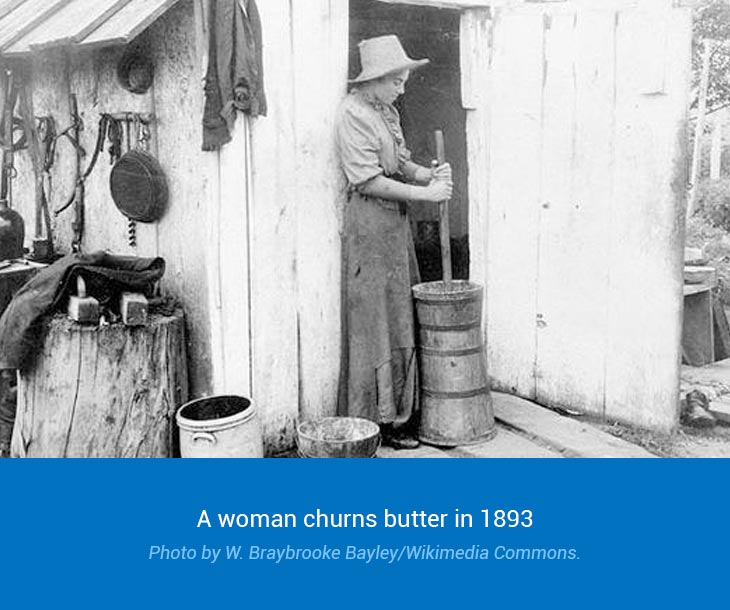
Interestingly enough, southern Europeans had a different take on butter thinking of it as a barbarian food. This is quite logical if you think of it – northern Europeans were not the friendliest guys back then. So why would Mediterraneans appreciate the food of their enemy? Especially considering that they were rather abundant with olive oil. Still, Romans used butter. Not to eat, gods forbid. But to heal wounds and improve the skin. Although we believe they did sneak a lick or two while applying butter. Such a wide variety of uses explains why was butter invented – it was not only delicious but useful, too.

The most recently discovered butter was buried in wooden buckets in the bogs of Ireland. Some of them date back to 400 B.C. Historians suppose that Celts were trying to preserve this spread to have something to eat if they’re out of provision. Some specialists think that it was a gift to gods or swamp magical creatures pagans believed to exist.
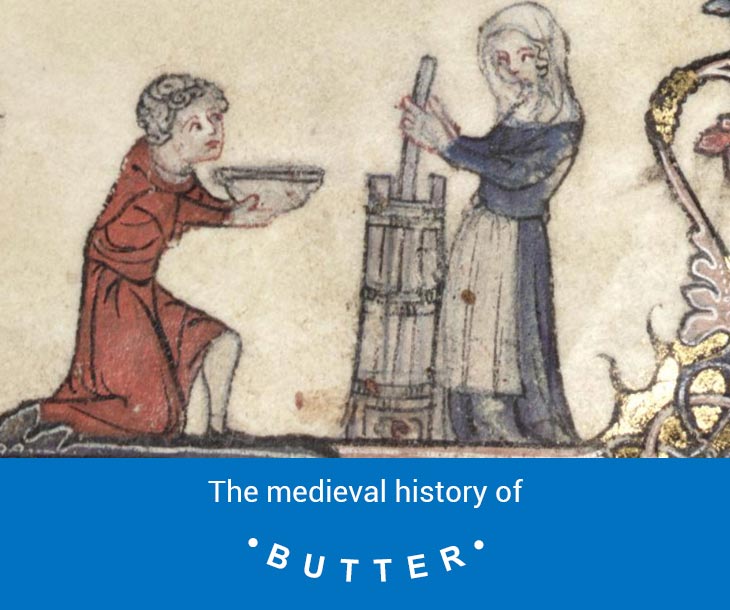
The Medieval history of butter
As the Middle Ages arrived, people were already all about the butter. Everyone loved it regardless of their status. Poor peasants appreciated it for the nourishment and quite a low price. And noble citizens cherished the creamy flavor and the richness it adds to dishes. But there was the most upsetting thing in the history of butter – the church didn’t allow it during Lent. So for the whole one month before Easter, Europe was struggling and dreaming about this delicious spread. They loved it so much that wealthy people would bribe the church to get permission to consume butter during Lent. Eventually, the butter won, and somewhere in the 17th century, this spread was allowed.
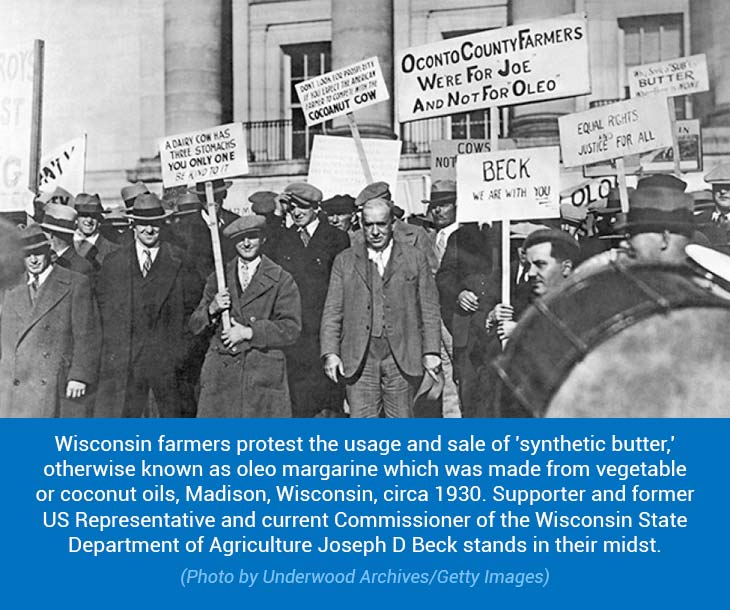
Butter was so popular that in the 19th century, a French chemist by the demand of Napoleon created the butter-like spread. It was made of rendered beef fat and milk for some flavor. It was the first prototype of margarine.

Thanks to pilgrims, butter got to America. This spread has quickly become a primary product on American farms. Pilgrims churned butter by hands back then. Advanced churns were introduced much later.
The industrialization of butter
Butter was hand-made up until the 19th century. The United States was the first to implement factories in the 1860s. At the end of the 1870s, Swedish engineer Carl Gustaf Patrik de Laval introduced the centrifugal cream separator.
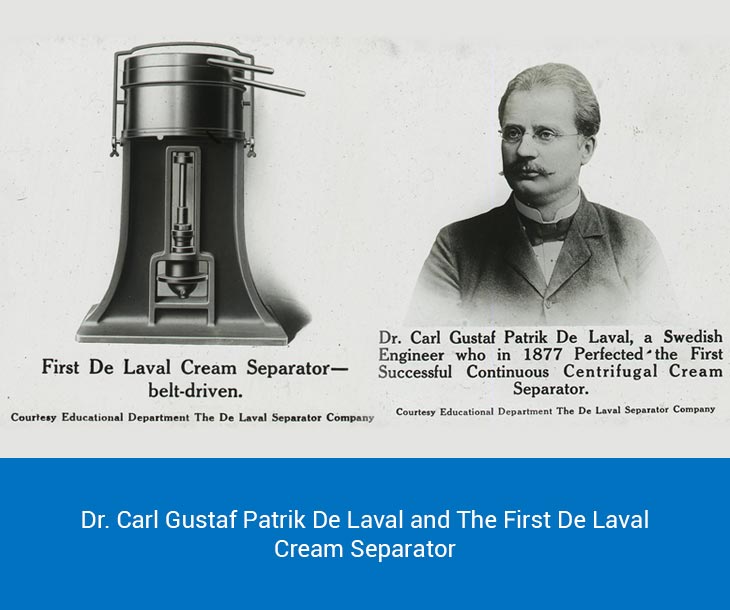
It became a significant improvement for the manufacturing of butter that speeded up the process. In 1900, over half of the spread created in the U.S. was made in factories. And Europe followed the example.
On the rise of the 20th century, American citizens consumed an unbelievable amount of 18 pounds of butter per capita. That’s around one stick and a half per one person on a weekly basis. And Europeans didn’t fall behind much.
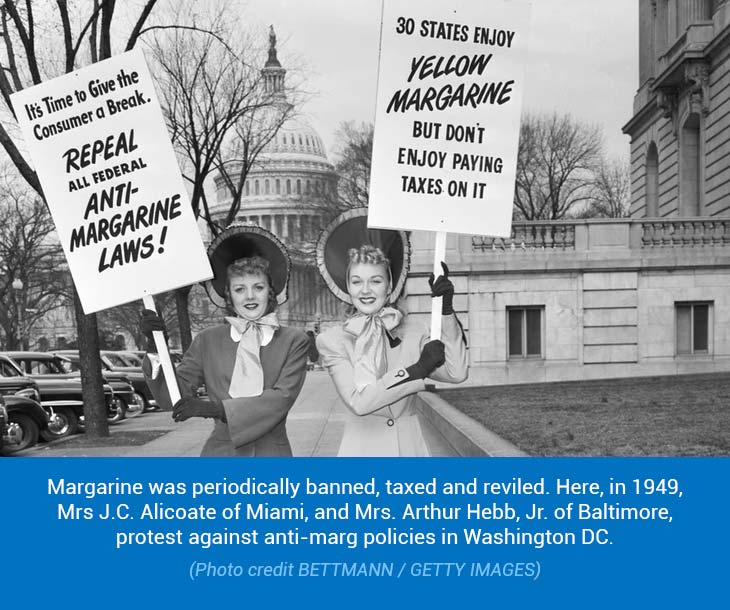
Unfortunately, the Great Depression and World War II forced changes to these statistics. The lack of jobs and money made butter a luxury product. It was replaced by margarine that didn’t contain any beef fat now – it was made of vegetable oil with a bit of yellow food coloring to make it look like butter. While the real creamy spread disappeared from family tables. Moreover, in the 1980s USDA started advocating for the low-fat diet, and consequently, the amount of consumed butter lowered even more. Up until today both in the E.U. and the U.S. people eat more margarine than butter.
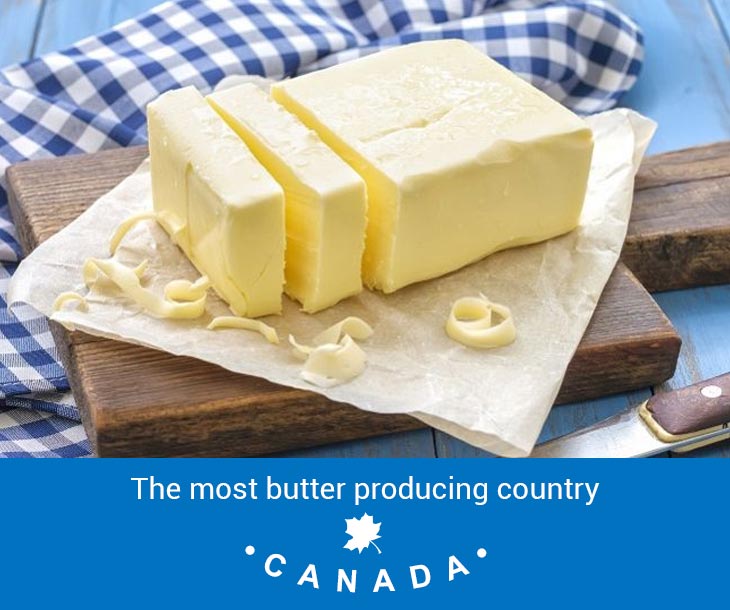
However, the situation becomes better. As researchers discover that margarine is way more harmful than butter, people switch to the traditional spread. Today, even dietitians advise eating around 10 grams of butter per day. Many health-oriented people obtain fat-based diets. And if you’re wondering which country produces the most butter now, let us tell you that it is, quite unexpectedly, Canada.
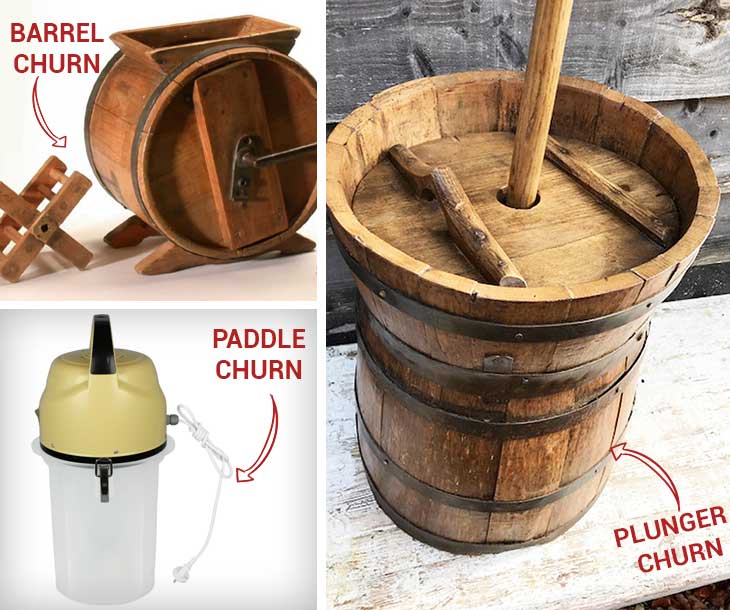
Kinds of butter churns
We can’t tell precisely when was the butter churn invented because our ancestors used different kinds of such devices. An antique butter churn was usually made of wood. There were two kinds. One of the older types looked like a barrel that was placed on its side. People would fill it with milk, close, and rotate the handle attached to the barrel. The handle in its turn rotated the paddles inside of the barrel churning milk. Later a barrel was replaced with a box.

Discover more about how butter churns work from our article! It’s an interesting read 🙂
Another type is a plunge or a dash churn. It was also usually wooden, but sometimes you could meet a ceramic butter churn. It would look more appealing and, however, wood was preferred for creating this device because a clay butter churn is not as durable.
Plunge churns were overtaken by paddle ones because they performed better. Thus, they became a prototype for a vintage metal butter churn you could meet in antique shops. Interesting that ancient wooden barrels with handles became a starting point of the dandy butter churn history – the vintage device loved by modern hipsters so much.
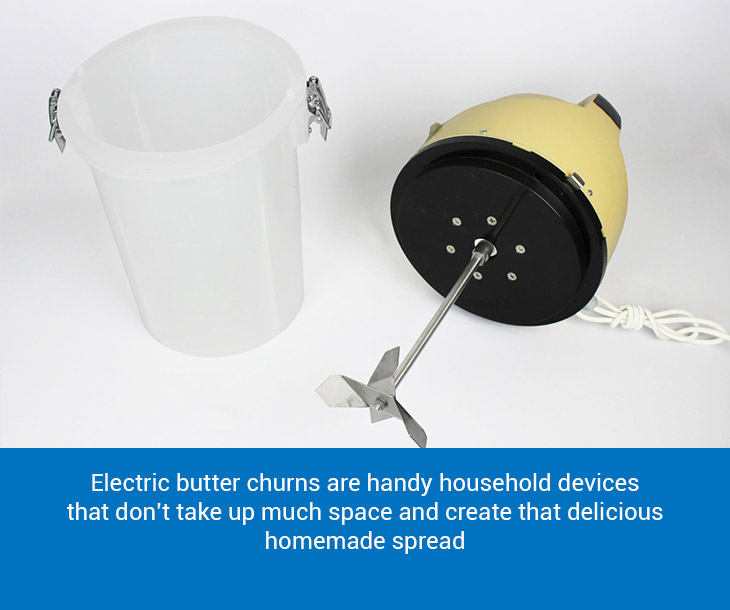
It requires rather a lot of time to make butter by hand using any of those mechanic churns. But fortunately for us, today machines are used to make butter both in factories and in our homes. There are electric butter churns that can become a handy household device that doesn’t take much space and creates delicious homemade spread without involving the human in the process.
Explore our butter churns for home and small-to-medium farms to indulge in the rich taste of butter you make by yourself! If you need any help with choosing the right churn, just drop us a line.

As you can see, butter has quite a rich history. And it’s hard to believe that this rather basic ingredient went such a long journey to become a conveniently packaged stick in our fridges. Now, when you know the background of butter, you can appreciate it even more.

